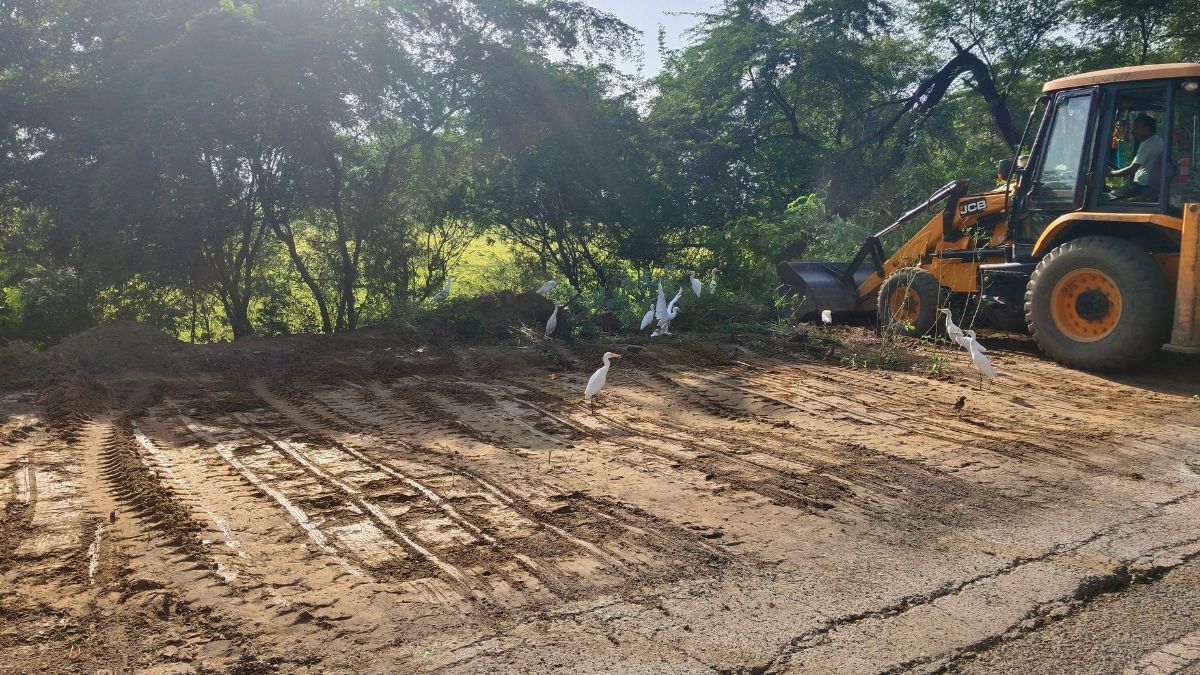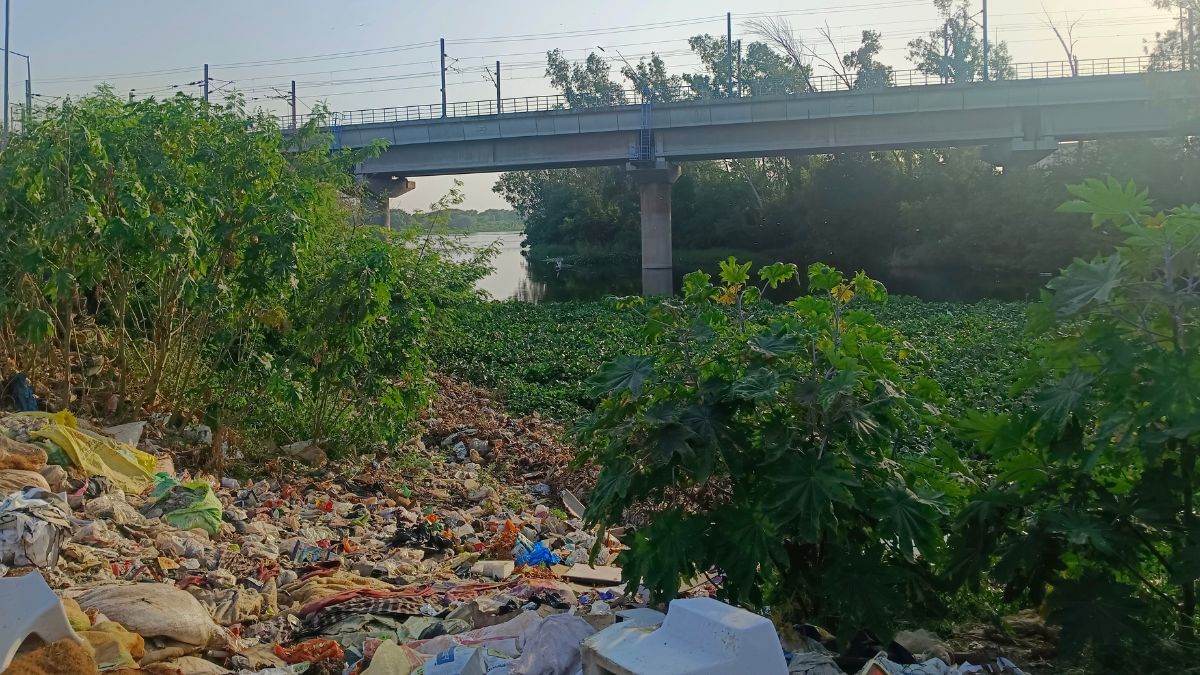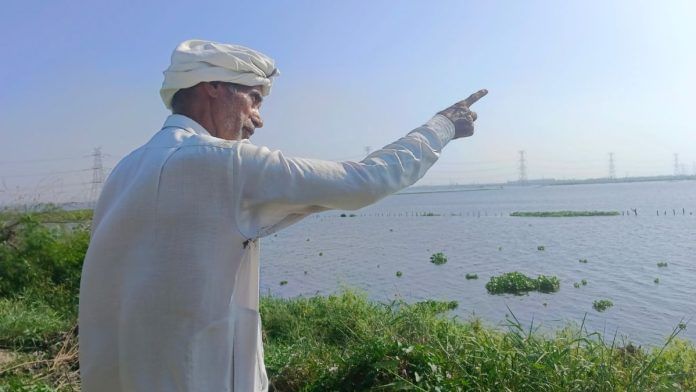New Delhi: Najafgarh Jheel, which has been awaiting official recognition as a wetland for 11 years, now has to wait another four weeks. The National Green Tribunal (NGT) on 4 September granted the Union Ministry of Environment an additional eight weeks to prepare a joint report for the lake’s designation as a wetland.
It’s one of the largest water bodies in the Delhi NCR, shared between the Delhi and Haryana governments. The Indian National Trust for Art and Cultural Heritage (INTACH) filed the first legal petition in the case back in 2014.
“It has now become a continuous cycle of meetings and hearings without any resolution, while the waterbody is dying. No authority seems concerned about saving it,” said Manu Bhatnagar, Principal Director of INTACH.
Also known as the Najafgarh Drain (Naala), it is a historic lake located in Delhi. It was originally fed by the Sahibi River, which originates in Rajasthan and flows through Haryana into Delhi.
The land around the lake is jointly shared by the central government of India, the Haryana Government, the Delhi Government, farmers, and private landowners.
In addition, multiple state and central agencies have been involved in the lake’s revival efforts and the ongoing legal battle.
While the Delhi government has largely remained silent on the issue—offering verbal support for the wetland tag—the Haryana government remains firm in offering only 75 acres for designation as a wetland, which INTACH, the petitioner, has rejected.
“We are offering 75 acres that can be declared as a wetland. Just because 100 or 1,000 acres are submerged in sewage water doesn’t mean the entire area qualifies as a wetland,” said a senior official from the Haryana Wetland Authority, speaking on condition of anonymity.

First petitioner
Manu Bhatnagar, Principal Director of INTACH, began his journey to secure the wetland tag for the Najafgarh Jheel in 2000.
“The waterbody is not being protected and is not receiving the tag due to the negligence of authorities and the state’s own interests,” said Bhatnagar.
In 2021, Haryana acknowledged that the lake’s submerged area was several thousand acres — far larger than the 75 acres it now offers — before backtracking on its own data.
INTACH filed the petition in 2014. Since then, every meeting organised by the National Green Tribunal (NGT) has failed to reach a conclusion. The Haryana government has frequently failed to appear or submit the necessary documents and reports. Farmers and private landowners have also resisted relinquishing land for the wetland, citing inadequate compensation and undervaluation.
The lake, referenced in the Delhi Gazetteer of 1883, was once noted as spanning 88 square miles (approximately 220 sq. km or 54,363 acres). And Delhi includes Najafgarh in its list of priority wetlands.
In 2021, the Delhi government formed an Expert Committee to prepare a five-year Environmental Management Plan (EMP) for the revival of the Najafgarh Jheel and to evaluate its potential designation as a wetland. The committee conducted multiple surveys to document the region’s flora, fauna, and particularly the migratory bird species that visit the area.
The Delhi government also proposed leasing 100 acres from farmers to develop recharge ponds. However, the proposal was rejected by the farmers, who cited concerns over insufficient compensation.
In 2023, Delhi’s Lieutenant Governor V.K. Saxena, apart from chairing multiple meetings on the issue, visited the Najafgarh area. He emphasised the need to stop the discharge of 110 million gallons per day (MGD) of domestic and industrial waste into the lake. He also called for coordinated efforts with the Haryana government to address the issue, given the cross-border nature of the problem.
“Implementation of decisions without extending committed timelines is important, and departments need seamless coordination and must break departmental silos when dealing with the issue,” said V.K. Saxena in one of the meetings.
The revival of Najafgarh Jheel is part of the broader Yamuna River cleaning initiative, which is being monitored under the directions of the NGT.
As part of the rejuvenation efforts, the Irrigation and Flood Control (I&FC) Department has launched the Najafgarh Riverfront Project at the Vipin Garden section near Dwarka. Under this initiative, 50 acres of land will be redeveloped, featuring a 21-acre park with walking tracks, play areas, a Chhat Ghat, parking zones, and landscaped open spaces.

Also read: Najafgarh jheel to nala — How Delhi and Gurugram ruined their second-largest waterbody
The many owners
Sixty-three-year-old Omprakash owns five acres of land in Delhi’s Rawta village — once enough to feed his family and earn a decent living. But for the past 20 years, his land has remained unusable, submerged in sewage water flowing in from Gurugram.
“This very land was once our source of food — now it’s become a sewer,” said Omprakash, pointing to the black, polluted water that has overtaken his farm.
Sitting beside what is now barren land, he recalls how his family once grew two seasonal crops each year. Today, he works as a driver to make ends meet. And he is not alone — many others in the area have refused to lease their land to the government or accept the compensation offered.
The damage extends beyond agriculture — the highly polluted water is now affecting the health of livestock and villagers.
According to the Environmental Management Plan and reports submitted by INTACH, the villages in Delhi falling within the Najafgarh Jheel region and its surrounding areas include Rawta, Hainpur, Shikarpur, Ghumanhera, and Deorala.
On the Haryana side, the affected or flooded villages include Dharampur, Mohammadheri, Kharki Majra, Dhankot, Chandu, Daulatabad, Budhera, and Makrola.
“If the Jheel receives an official wetland tag, it will come under the protection and management of the Wetland (Conservation and Management) Rules, 2017 and the waterbody would be protected and life around it would be saved,” said environmentalist Divan Singh.
Singh further explained that the wetland designation would lead to stronger conservation efforts, protect the ecological health of the area, support migratory birds along the Central Asian Flyway, and potentially help recharge the region’s groundwater levels.
“Najafgarh Jheel needs coordinated efforts and real work — not just plans and endless committees,” said Singh.
(Edited by Ratan Priya)






